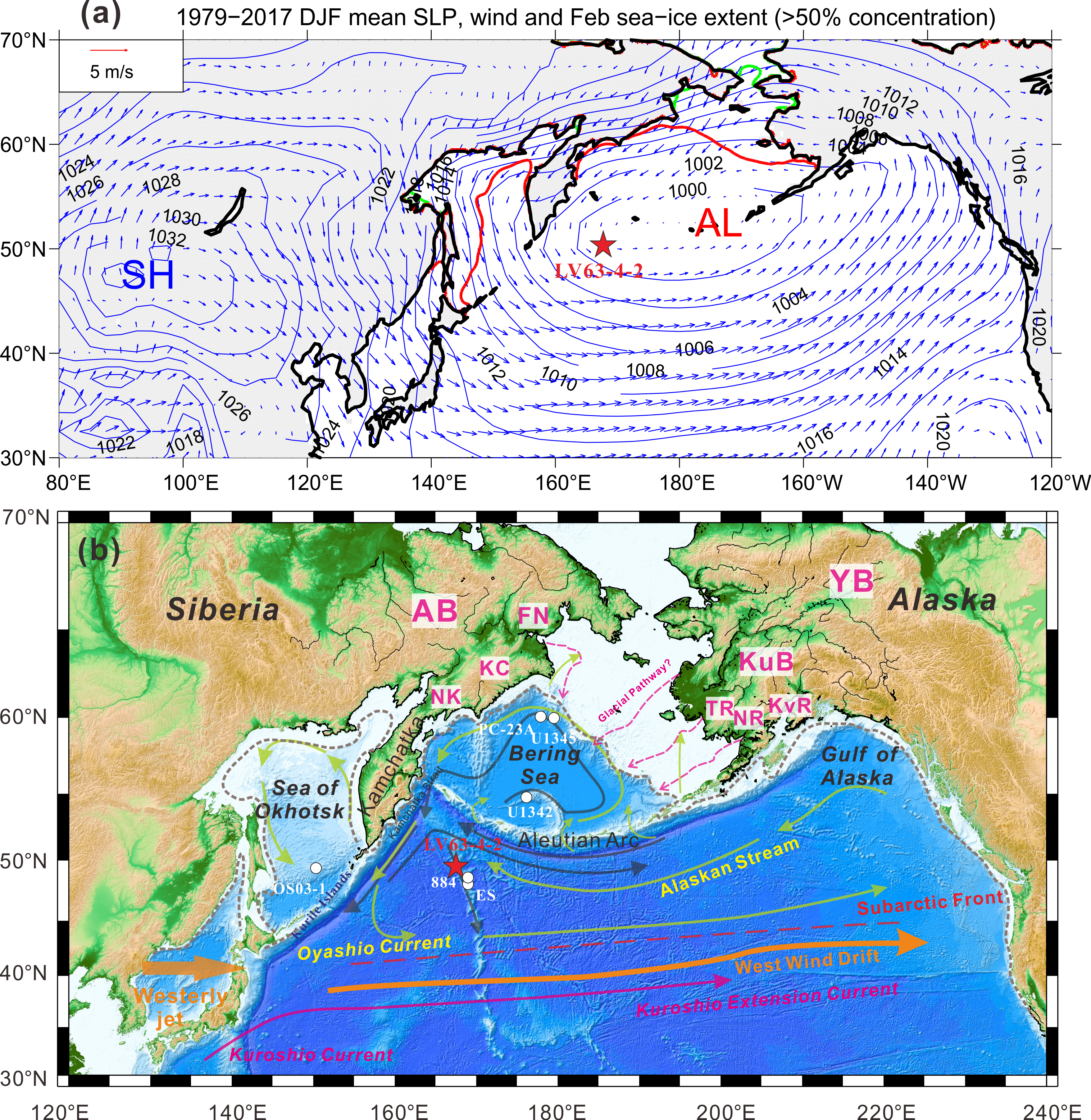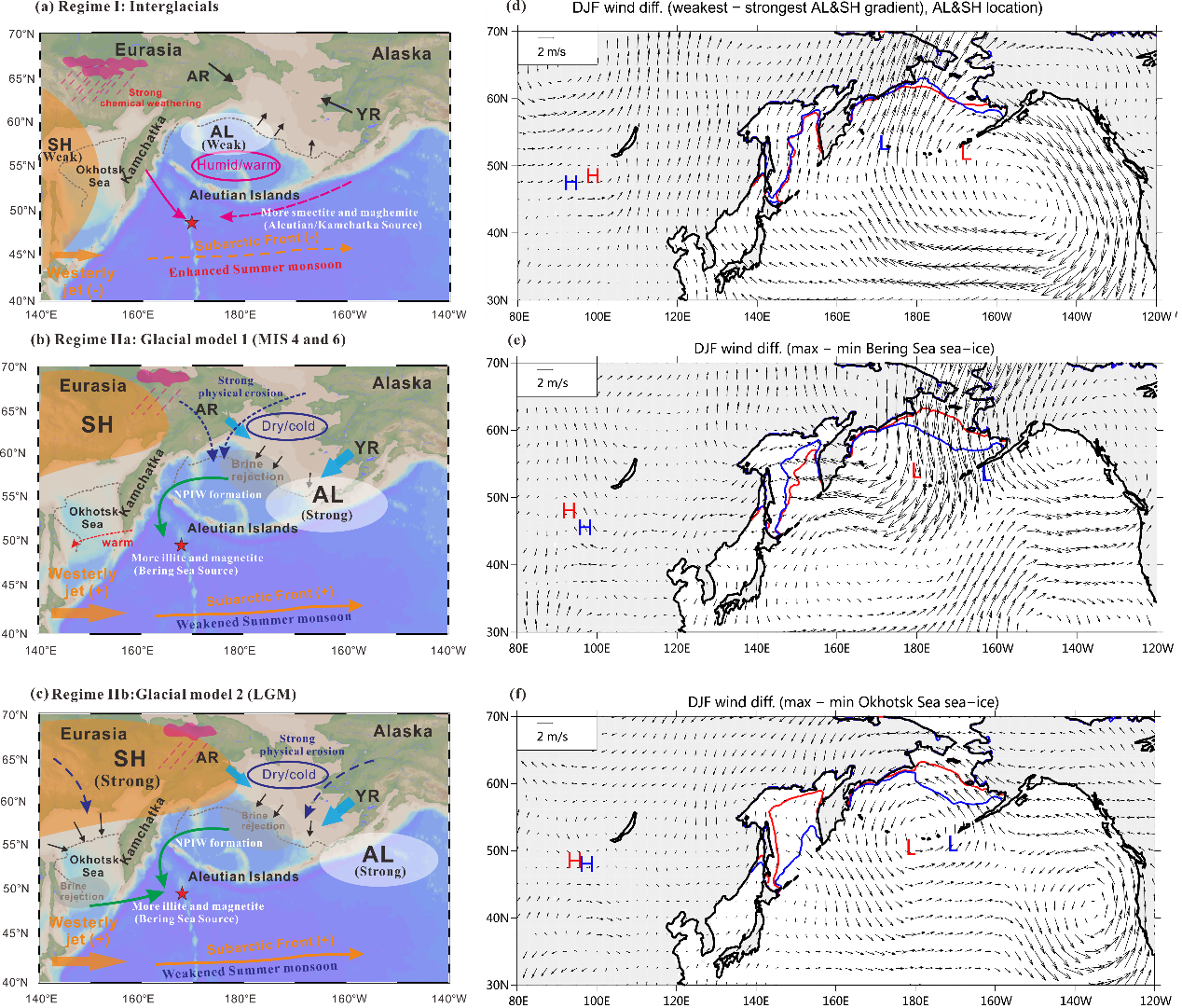Understanding past climates (paleoclimate) can provide us with windows into our future. Today, greenhouse gases emitted by human activities have exceeded the range within which the climate system can adjust, implying that more severe climate system transitions are likely in the future.
With the intensification of global warming, the Arctic climate will react more quickly and more sensitively in the foreseeable future, with rapid warming in the Arctic regions and the Bering Sea.
Therefore, the subarctic Pacific Ocean (SPO) provides a key connection between the low and high latitude climate systems and plays an important role in global climate change. A research team from the Centre for Marine Magnetism (CM2) at the Southern University of Science and Technology (SUSTech) assessed the sensitivity of regional sediment transport dynamics to orbital forcing over the last 230 thousand years.

The findings, which appear in the journal Geophysical Research Letters, a leading Natural Index journal in the field of Earth Sciences, will help researchers understand the vital role of both sea ice and high-latitude ocean-atmosphere dynamics in the past and future of the Arctic region.
Why subarctic Pacific Ocean (SPO) matters?
SPO provides a key connection between the low and high latitude climate systems and plays an important role in global climate change. For example, both Arctic sea-ice extent and North Pacific Intermediate Water (NPIW) formation are closely coupled to North Pacific hydroclimate. Therefore, climate variability in this region is strongly influenced by synoptic-scale ocean-atmosphere dynamics. In addition, the terrestrial hydroclimate influencing the North Pacific continental margins is sensitive to the position and intensity of the Aleutian Low. An atmospheric low-pressure cell centered on the Aleutian Islands affects the strength and trajectory of winter storms.
While recent observations and records demonstrate the coupled impacts of the North Pacific atmospheric circulation and Arctic sea ice on the regional hydroclimate, little is known about the long-term dynamics of these atmospheric modes or their interaction with oceanic processes in the SPO. The CM2 team presents geochemical data, clay, heavy mineral abundances, and magnetic rock records from core LV63-4-2 recovered from a water depth of 2,946 m in the SPO (Figure 1b).

Figure 1. (a) Mean winter climate in the North Pacific based on reanalysis data from 1979 to 2017. Blue contours show mean February sea level pressure (SLP), and blue arrows indicate mean December-January-February (DJF) 850-1000 hPa wind. Labels SH (Siberian High) and AL (Aleutian Low) depict the highest and lowest sea level pressure. Red and green lines show mean February and annual mean sea-ice extent (>50% concentration). (b) Bathymetric chart of the subarctic North Pacific region, showing core sites, schematic ocean currents, and major river systems.
A potential feedback mechanism
Results show that variability in wind directions, sea-ice formation, and hydrological budgets in the marginal seas adds complexity to understanding temporal and spatial changes in intermediate water production in the subpolar Pacific Ocean. By tracing terrigenous sediment sources and transport dynamics over orbital timescales, the study by the CM2 at SUSTech provides new constraints indicating the importance of the Aleutian Low dynamics as a potential feedback mechanism in high-latitude climatic and environmental changes (Figure 2).

Figure 2. (a-c) Schematic illustration of the proposed influence of atmospheric circulation patterns on the sea-ice extent, NPIW formation, and sediment provenance in the SPO over orbital timescales. (d-f) Reanalysis data from 1979-2017 showing 5-year composites of February sea-ice extent, winter (DJF) AL and SH locations (markers L and H), and differences in low-level (850-1000 hPa) wind (arrows) between the two states.
Although glacial-interglacial provenance changes in the subpolar Pacific Ocean appear to reflect the position of the Aleutian Low, as set by orbital forcing and glacial-interglacial climatic boundary conditions, further paleoceanographic studies are required to explore more subtle differences indicated between the different glacial periods. In particular, better constraints on the depths, source regions, and timing of overturning circulation changes in the North Pacific are required to translate the qualitative findings into a more quantitative understanding of the impact of intermediate and deep water formation in the subpolar Pacific Ocean on both regional and global climate.
This work was supported financially by the National Natural Science Foundation of China (NSFC), Global Change and Air-Sea Interaction, the Laboratory for Marine Geology, Qingdao National Laboratory for Marine Science and Technology, and the Shenzhen Science and Technology Program.
Dr. Yi Zhong from the Department of Ocean Science and Engineering (OSE) at SUSTech is the first author of the paper. Chair Professor Qingsong Liu is the corresponding author.
Paper link: https://doi.org/10.1029/2021GL095312
To read all stories about SUSTech science, subscribe to the monthly SUSTech Newsletter.
Proofread ByAdrian Cremin, Yingying XIA
Photo By